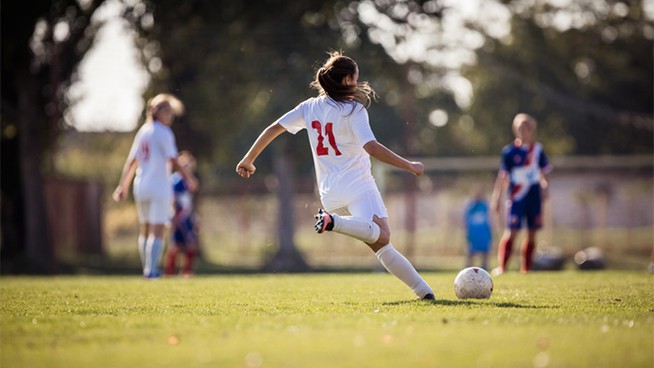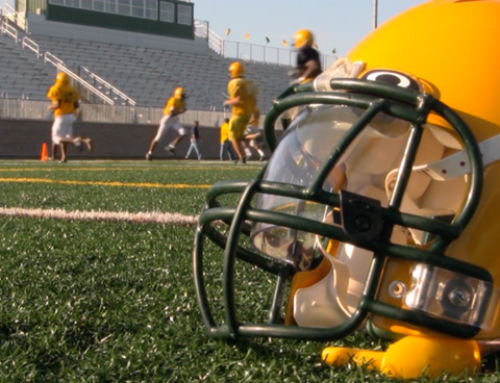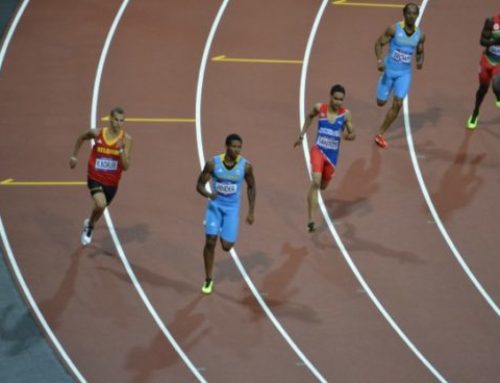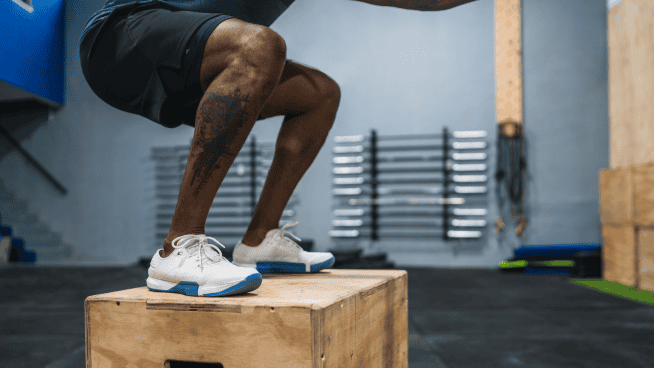Get Faster With 2 Essential Plyometric Exercises
Speed kills. And the ability to produce force at an incredibly fast rate is the key to athletic performance. Besides sprinting, plyometrics—specifically jumping—is one of the best ways to train an athlete to produce more force.
In a 2017 study, athletes who had higher peak power outputs in the Vertical Jump also ran faster 40-meter dash times. So if training the ability to jump higher produces faster sprint times, that immediately tells coaches and athletes that plyometrics are extremely important.
So if jumping is important, what kind of jumping should our athletes perform in training programs? A 2016 study compared the effects of horizontal and vertical jumping. Both increased sprint times, jump height/distance and change-of-direction times.
So athletes need both vertical and horizontal jumping to increase power and speed on the field of play.
Performing both the Vertical and Broad Jump in your programs will increase overall speed, but when should these jumps be completed? Performing plyometrics before sprinting has shown to increase 20-meter and 40-meter sprint times dramatically, according to a study from the Journal of Sports Medicine and Physical Fitness. The increases were as high as .46 seconds in the 20-meter sprint and 0.41 seconds in the 40-meter sprint. These are significant increases in speed!
Performing these exercises immediately after a dynamic warm-up is ideal to central nervous system adaptation. A sample workout routine would be:
- Soft Tissue: Foam Roll
- Dynamic Warm-Up
- Plyo-Prep: Toe Drop-Double Leg to Single-Leg – 2×5 each
- Plyometrics: Non-Counter Movement Vertical Jump – 4X4
A sample week of plyometrics could be Vertical Jumps on Monday, Horizontal Jumps on Wednesday and Lateral Jumps on Friday.
After jumping technique is mastered, depending on the age of the athlete, load him or her with a bungee or weighted vest for increased power output. Jump training should be completed almost year-round except for sports with high volumes of jumping and running such as basketball, soccer and volleyball.
READ MORE:
[cf]skyword_tracking_tag[/cf]RECOMMENDED FOR YOU
MOST POPULAR
Get Faster With 2 Essential Plyometric Exercises
Speed kills. And the ability to produce force at an incredibly fast rate is the key to athletic performance. Besides sprinting, plyometrics—specifically jumping—is one of the best ways to train an athlete to produce more force.
In a 2017 study, athletes who had higher peak power outputs in the Vertical Jump also ran faster 40-meter dash times. So if training the ability to jump higher produces faster sprint times, that immediately tells coaches and athletes that plyometrics are extremely important.
So if jumping is important, what kind of jumping should our athletes perform in training programs? A 2016 study compared the effects of horizontal and vertical jumping. Both increased sprint times, jump height/distance and change-of-direction times.
So athletes need both vertical and horizontal jumping to increase power and speed on the field of play.
Performing both the Vertical and Broad Jump in your programs will increase overall speed, but when should these jumps be completed? Performing plyometrics before sprinting has shown to increase 20-meter and 40-meter sprint times dramatically, according to a study from the Journal of Sports Medicine and Physical Fitness. The increases were as high as .46 seconds in the 20-meter sprint and 0.41 seconds in the 40-meter sprint. These are significant increases in speed!
Performing these exercises immediately after a dynamic warm-up is ideal to central nervous system adaptation. A sample workout routine would be:
- Soft Tissue: Foam Roll
- Dynamic Warm-Up
- Plyo-Prep: Toe Drop-Double Leg to Single-Leg – 2×5 each
- Plyometrics: Non-Counter Movement Vertical Jump – 4X4
A sample week of plyometrics could be Vertical Jumps on Monday, Horizontal Jumps on Wednesday and Lateral Jumps on Friday.
After jumping technique is mastered, depending on the age of the athlete, load him or her with a bungee or weighted vest for increased power output. Jump training should be completed almost year-round except for sports with high volumes of jumping and running such as basketball, soccer and volleyball.
READ MORE:










